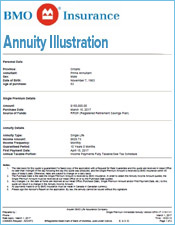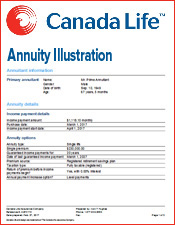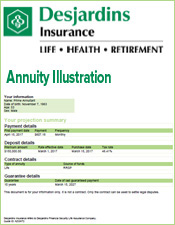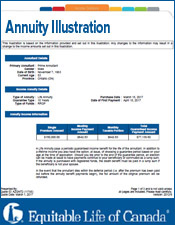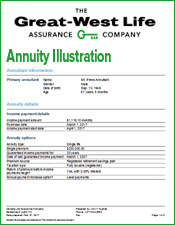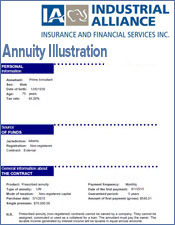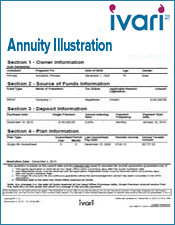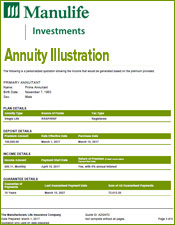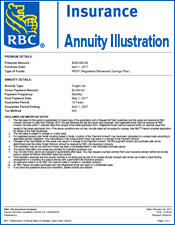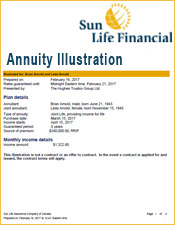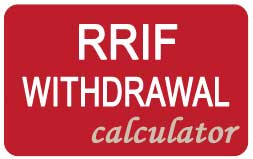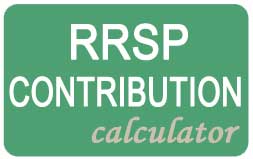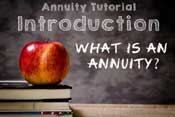RRSP: Registered Retirement Savings Plan

What Is An RRSP And How Does It Work?
If you’re thinking of saving for retirement, you have a few options. For most Canadians, the go-to choice for retirement investments is the RRSP. In this guide, we will go over what an RRSP is, how it works, and why it’s a standard retirement account choice.

CONTENTS
- What is an RRSP?
- How does an RRSP work?
- Benefits Of An RRSP
- Contribution Limits
- RRSP Contribution Calculator
- Withdrawal Rules
- The Cost Of Early Withdrawals
- Withholding
- Regular Income Tax
- Loss of Tax-Sheltered Compounding
- Loss of Contribution Room
- Steps After Maturity
- How Does An RRSP Compare To A TFSA?
- TFSA
- How To Open A RRSP
- Compare Institutions
- Decide How You Will Invest
- Alternative Investments
- Complete RRSP Application
- Open & Fund Your Account
- FAQ
- Conclusion
What Is An RRSP?
Created in 1957, the Registered Retirement Savings Plan (RRSP meant to help Canadians save for retirement.
The RRSP is an old retirement account meant to incentivize Canadians to save for retirement early. To do so, the account offers immediate tax benefits. The structure of RRSPs allows Canadians to hold off paying their taxes until they retire.
How Does An RRSP Work?
An RRSP offers a simple and rewarding way to plan for retirement. Opening an account is easy and you can do so at many banks or other financial institutions.
Once you open an RRSP, you can start adding contributions towards your retirement. But as a retirement account, you should be aware that you typically can’t withdraw funds (without consequences) until you retire. There are 2 exceptions which we will list in a moment…
What you need to know right now is that an RRSP is a “ tax-advantaged” savings or investment account meant to motivate you to save for retirement. As a part of that motivation, you receive several benefits for using an RRSP.

Benefits Of An RRSP
Tax Advantages
An RRSP provides immense tax benefits. But the tax benefits of an RRSP are especially good for high-income earners. That’s because contributions to RRSPs are tax-deductible for the tax year they were made on.
When you contribute to your RRSP, the amount you contributed is subtracted from your taxable income. That means if you make $60,000, but contribute $10,000, the CRA treats you as though you made $50,000.
When you have a higher income, contributing higher sums can drop you into a lower tax bracket. That can mean significant tax savings now.
Of course, tax-advantaged doesn’t mean tax-free. Your RRSP contributions will be taxed when you withdraw them during retirement. RRSP withdrawals are considered taxable income. However, most people normally spend less money when they retire. If you annually withdraw less money in retirement than you earn in income now, that means your RRSP contributions reduced your lifetime tax burden.
Contribution Limits
Of course, there’s a catch to these great tax benefits. The first R in RRSP stands for “registered” and “registered” means there are certain rules you must follow. The most significant rule is that RRSPs have contribution limits.
RRSPs have higher contribution limits than TFSAs and similar long-term savings/investment accounts. This makes them even better for high-income earners. But you can still only contribute so much.
The 2020 contribution limit for an RRSP is 18% of your earned income, up to a maximum of $27,230. For 2021, the limit will be the same 18%, but up to a maximum of $27,830.
High contribution limits may benefit the wealthier more, but anyone can reduce their current tax burden through RRSP contributions.
RRSP Contribution Calculator
There are maximum contribution limits for RRSP's. To find out the exact amount you can contribute to your RRSP for the current year, check on your most recent Notice of Assessment you received from Canada Revenue Agency. You may contribute to your RRSP until December 31 of the year in which you reach age 71.
Use the our RRSP CONTRIBUTION CALCULATOR to determine your maximum RRSP contribution.
Withdrawal Rules
If high RRSP contribution limits are their strongest selling point, the restrictive withdrawal rules are their main drawback.
You are only supposed to withdraw your RRSP savings once you retire. There are only two exceptions to this rule.
First, if you’re a first-time homebuyer, you can use your RRSP to cover the Home Buyers Plan. You can withdraw $35,000 for a mortgage down payment for your first home. However, you must repay that amount within the next 15 years.
Second, you can tap into your RRSP for the Lifelong Learning Plan. You can withdraw $10,000 to $20,000 per year for educational expenses. After your education is complete, you must repay what you withdrew over the next 10 years.
Apart from these 2 exceptions, you can withdraw from your RRSP once it reaches maturity. Maturity begins on December 31st of the year you turn 71.
You can still make RRSP withdrawals at any time if your funds aren’t in a locked-in plan. However, there are a few things you need to keep in mind.
The Cost Of Early Withdrawals
Withdrawing from your RRSP before maturity will affect your current taxes. Any withdrawals you make are immediately taxable.
Withholding
The first tax you will have to pay is withholding tax. The withholding tax rate is:
- 10% for any amount up to $5,000
- 20% for any amount between $5,001 and $15,000
- 30% for any amount over $30,000
- The Government of Canada does not want you to make early withdrawals apart from the 2 options we’ve gone over.
Keep in mind that Quebec has its own provincial withholding tax rates.
Unfortunately, withholding tax is only the beginning of your worries.
Quebec
Quebec’s withholding rates are different from the rest of Canada’s. The province has a provincial tax, while they also a smaller federal withholding rate.
For amounts up to $5,000, the rate is 5% federally. The second bracket ($5,001 to $15,000) is 10%, and for the remainder above $15,000, 15%.
These figures are lower than the national rates, but there is an extra 15% provincial withholding tax. So, you will have to pay more for lower brackets in Quebec. But for amounts above $15,000, you pay the same 30% rate as the rest of Canadians. The only difference is that half of that is paid to the province.
Regular Income Tax
Any withdrawals from your RRSP are treated as regular income tax. So, after you pay withholding tax, you must pay additional taxes at the end of the tax year.
You would still normally pay income taxes on RRSP withdrawals after their maturity. However, you don’t have to pay income tax on top of withholding tax after maturity.
Loss Of Tax-Sheltered Compounding
The main benefit of an RRSP is tax-sheltered compounding. Compounding is when your funds receive interest, dividends, or other investment earnings. Normally, your earnings on these gains are not taxable until you withdraw in retirement.
So, by withdrawing from your RRSP early and paying the additional taxes, you’re also cutting out the long-term investment gains you would normally make. Taking a seemingly small sum now may end up costing you multiple times that in terms of lost potential.
Loss Of Contribution Room
Lastly, early withdrawals, apart from those 2 exceptions, cut into the contribution space you initially had. You can still make maximum contributions in the future. But you cannot re-contribute the amount you withdrew.
Similar to your loss of tax-sheltered compounding, this results in a huge long-term loss if you do the math. It’s overall a bad idea to withdraw from your RRSP early.
Steps After Maturity
Once your RRSP reaches maturity, you must make mandatory minimum withdrawals. At the maturity point, you must make a major decision on your withdrawals. You have 3 options.
- Option 1: Lump Sum
- Option 2: RRSP To RRIF
- Option 3: Annuity
Your simplest option is to withdraw your entire RRSP in one lump sum. The withdrawn amount will be subject to the withholding tax, which is withdrawn and paid to the government immediately.
After you pay the withholding tax, you just need to pay income tax on your RRSP withdrawals.
You can convert your RRSP into a Registered Retirement Income Fund (RRIF). An RRIF gives you a steady, predictable income in retirement. However, you will need to meet a minimum withdrawal requirement every year.
It’s important to keep in mind that your RRIF minimum withdrawals are annualized. Your minimum withdrawal will be subject to taxable income. However, you won’t need to worry about the withholding tax or any penalties. The only catch is that if you withdraw more than the minimum amount, that amount will be subject to the withholding tax.
The most important thing when converting to an RRIF is making sure your annual minimums are adequate and sustainable. You’ll be penalized for over-withdrawing, and you run the risk of exhausting your funds if you’re not careful.
Your last option is converting your RRSP into an annuity.
An annuity is a guaranteed income for either the rest of your life or a specified period. You do not need to pay withholding tax on the funds you use to purchase an annuity. However, you must pay income taxes on the income you receive from your annuity.

How Does An RRSP Compare To A TFSA?
Many people want to compare the RRSP to a TFSA (Tax Free Savings Account)
.If you’re interested in long-term savings accounts, either of these choices is a good one for you. They are both tax-advantaged and designed to help you reach your long-term savings goals. But there are a few key differences between them.
The most important difference between these two accounts is how income is taxed during either withdrawal or contribution.
A TFSA is a tax-free account funded with your after-tax income. The money you put into a TFSA is already taxed before it goes into the account. So, you won’t get any tax deferments for your contributions. But you also won’t be taxed for your withdrawals. The best part is that any income from your investments won’t be taxed while held in your TFSA. In that regard, a TFSA is similar to an RRSP. But your TFSA income is also free of any taxes when it’s withdrawn.
It may seem like a TFSA is a good alternative to an RRSP. In some circumstances, it may be. But a TFSA also lacks the retirement benefits that an RRSP offers. You also cannot lower your tax burden for the current tax year by contributing to your TFSA.
An RRSP is tax-deferred. Any contributions you make are deducted from your income taxes. While you pay taxes for your RRSP later, your retirement income will most likely be smaller than your current income. So, the net result is less paid in taxes over your lifetime.
The structures of TFSAs and RRSPs are set up to save you money. So, both will work for you in some circumstances.

TFSA
You need to remember a few things if you’re still considering a TFSA. First, because of the freedom it provides, it’s an easier account to use. It allows you to simply contribute and withdraw as you see fit. Also, if you withdraw from a TFSA, you can put the same amount back without cutting into your contribution limit.
Despite all this, there is one major drawback to having a TFSA. If you want a serious retirement account, you can’t contribute nearly as much to a TFSA as you can to an RRSP. TFSA contribution limits are just $6,000 per year for 2019 and 2020. For the preceding years, the limit was $5,500 or $5,000.
As you can see right away, a TFSA allows for a small fraction of less than a fourth when it comes to contributions. Your contributions will also not provide you with any tax breaks.
So, a TFSA is a useful account that is wise to consider, just like an RRSP. But both accounts offer unique benefits. In an ideal world, you could invest in both and maximize your savings potential.
How To Open A RRSP
Opening an RRSP is easy. You can open an RRSP with most Canadian banks. You can also choose from many other financial institutions.
You can open your own RRSP with just a few simple steps.
Compare Institutions
Learn about all the different types of RRSPs and the financial institutions that offer them. Talk to them and find out what their fees are and what investments they offer.
Even among the major banks, there are differences in fees and investment options. It never hurts to take your time to shop around and see who has the best offer for you.
Decide How You Will Invest
While you’re comparing financial institutions, you should also consider the investments you want to make with your RRSP. You have many options, all with different risks and potentials.
The simplest RRSP option is a savings account. Ideally, you would open an account with a high-interest rate and no fees. High-interest savings accounts allow you to fight off inflation while not having to pay taxes on your interest earnings. However, they lack the earning potential that other options provide.
Since RRSPs offer tax-sheltered growth, you may want to consider investments like mutual funds and stocks. Many of the largest banks will offer mutual fund investment options for your RRSP.
You can also choose to invest in GICs, Canada Savings Bonds, and ETFs.
Your choice of investments should also take into account the level of control you want over your investments. Some plans only offer GICs or mutual funds. But you could also choose to open a self-directed RRSP. This lets you invest in the financial instruments of your choice. You have more freedom with a self-directed account, but you also have all the responsibility of educating yourself and making the right choices.
Alternative Investments
Developments in financial technology have allowed for new types of investments.
One of the growing ways Canadians invest in RRSPs is through robo-advisors, an alternative portfolio management option. As the name suggests, your portfolio automatically managed. Because of that, a robo-advisor service will normally charge a management fee.
Robo-advisors offer an easier way for investors to invest in ETFs and some stocks. As the investor, you must make several inputs such as risk tolerance.
Complete RRSP Application
Using the criteria we’ve mentioned, you will need to make a final choice in a financial institution. Then, you need to submit a formal application.
A typical RRSP application requires you to have one or two pieces of government identification on hand. Often, only one of them has to be from the government.
Your RRSP application will include several questions to determine your goals and level of knowledge. They will normally ask how much you know about investing, your goals, and personal financial questions.
You can also expect to have to show a Notice of Assessment from the CRA. The notice will inform the institution of how much money you can legally contribute to an RRSP. If you already have another employer-sponsored pension plan, you’ll need to show them. Other pension plans will affect how much you can contribute to an RRSP.
Lastly, you will need to provide information on your beneficiary.
Open & Fund Your Account
Normally, you need to fund an RRSP account right when you open it. You will need to transfer funds from another account.
You can then establish a contribution plan for your new RRSP. Options include pre-authorized contributions, payroll savings plans, and more.

FAQs
An RRSP is a very important investment. So, many people have more questions about how they work.
What Happens To An RRSP During Bankruptcy?
Your RRSP will be in large part protected during bankruptcy proceedings. Creditors cannot normally seize funds from an RRSP. However, contributions made during the 12 months before declaring bankruptcy may be seized by creditors.
Can You Move Your RRSP Somewhere Else?
You can transfer your RRSP from one financial institution to another. You can also transfer the account’s assets to the same financial institution.
There is one caveat when it comes to transferring RRSP assets to a different institution. The new institution must offer the same assets the first one does. If your RRSP assets include GICs, you will need to find another institution that also has them. This is known as “in-kind transfer”.
Your only other option is “in cash transfer”. This means that all your current assets with your first institution are sold, and the resulting cash is transferred to the second institution and invested in new assets that you agree to purchase.
To make an RRSP transfer possible, you will need to fill out a Form T2033 at your new financial institution.
What Happens To An RRSP When The Owner Dies?
When an RRSP owner (annuitant) dies, they essentially have their assets cashed out at fair market value. The value of all the assets is included as a part of their annual income and taxed at the marginal tax rate.
If there is a qualifying beneficiary, the year that the RRSP owner dies, all RRSP property is directly transferred to the beneficiary. Qualifying beneficiaries can include:
- A spouse
- Common-law partner
- Financially dependent child or grandchild
- Prior to death, the RRSP annuitant can also designate a(n):
- Financially dependent child or grandchild
- Charitable organization
- Estate
Conclusions
An RRSP is a great way to plan for retirement. You can save on your taxes now while ensuring growth for your wealth into your retirement.
You can easily set up an RRSP at any financial institution that offers them. However, you should do your research to ensure your retirement savings are held in good hands.
What to do now?
- We supply you with the best RRSP interest rates and other eligible investments in Canada as our brokers represent all the best financial institutions in Canada. For personal assistance on your RRSP please use our RRSP Form.




